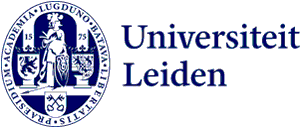Digital assessment tools
Read more about the available tools here.
Not sure which tool to use? Check the tool overview on the university teaching support site.
Examination software
The digital examination software currently in use by the Faculty of Humanities is Remindo. This software allows for examination both on the campus and from home.
Some advantages of Remindo are:
- Automation of the grading process. Closed questions are instantly graded automatically, and open questions are easily divided between colleagues
- Plagiarism check on open questions
- Several additional methods of preventing fraudulent behavior
- Detailed analyses on the quality of your exam as a whole, and of the individual questions
- Possibility of building a database of both questions and entire exams, which are easily re-usable
- User-friendly interface for students
- Large range of different question types. Including video and audio files is also possible.
Remindo can be used both for smaller, formative tests and summative examination. Have a look at this demo, which will show you the different question types available, and what making a test in Remindo will look like to your students. For a more detailed introduction of the program, also check out this webinar.
Would you like to use Remindo for (summative) exams? ECOLe will help you set them up. The entire process is outlines in the Digital Assessment Module. Make sure to take a look at it if you want to make use of this service. Make sure to request exams at least 20 business days in advance.
Are you interested in formative testing? Check out the webinar Formative Assessment with Remindo or the formative examination page.
Becoming a DIY-er is also possible, for both formative and summative testing. Learning to use Remindo does involve a bit of a learning curve, but ECOLe is always readily available for any support or assistance.
Brightspace has an integrated assessment tool: Quizzes. This is a user-friendly tool which allows for simple tests with open and closed questions.
We highly discourage using Quizzes for examination on campus. A plagiarism check and many other methods to prevent fraudulent behavior are not possible. For this reason we recommend using Quizzes for formative tests only. For more information on formative testing, check out the formative examination page.
Some advantages of Quizzes are:
- Possibility of building a database of questions, which are easily re-useable.
- Closed questions are instantly graded automatically
- Grading is possible with multiple colleagues (note: it is not possible for multiple people to grade a test simultaneously)
- Large range of different question types. Including video and audio files is also possible.
For more information about Brightspace Quizzes check out this protocol and the university’s Screensteps and Teachingsupport pages.
Written Assignments
Assignments is the most straightforward tool to have students hand in essays or other written assignments. Combine Assignments with TurnitIn if you would like to check for plagiarism.
For more information check out this protocol and the university’s Screensteps and Teachingsupport pages.
TurnitIn is a tool that checks for plagiarism. It is integrated in the examination software Remindo, but also e.g. Brightspace Assignments.
Use the TurnitIn Assignments Protocol for a step-by-step explanation on how to set up assignments or take-home exams for your students.
For more information also check out the university’s Screensteps and Teachingsupport pages.
Peer review and collaborative learning
FeedbackFruits is a versatile tool. It’s primary use is usually its peer review feature, which allows students to asses each other’s work (texts, audio or video). FBF also allows for students to interactively discuss a document, or audio or video file. They can help each other or leave questions and remarks to the teacher.
Another feature is ‘automated feedback’, an AI tool that assists with grading written assignments. Set parameters for e.g. punctuation or citation style and the software will automatically scan the document for those, leaving you to focus more on the contents.
The FeedbackFruits Tool Suite has many other options, which you can check out in the FeedbackFruits tool list, set up by ECOLe, or on the Teachingsupport page (check out the side bar for all tools).
For more information check out the Screensteps page and the official FeedbackFruits support site.
Students have access to the same video and audio tools that teachers do. Additionally, there exists a Quick Guide on how to make video essays, geared towards students.
Use Discussions to keep your students engaged with the course material. Have students submit questions about a class or paper, facilitate discussions about course material, or ask them for a weekly question or contribution about their readings.
For more information check out the university’s Screensteps and Teachingsupport pages.
Pitch2Peer is a tool where students can hand in video and audio files, e.g. digital presentations, knowledge clips or podcasts. Students can then assess eachother’s work according to parameters you have set.
For more information check out the university’s Screensteps and Teachingsupport pages.
Students have access to the same video and audio tools that teachers do. Additionally, there exists a Quick Guide on how to make video essays, geared towards students.
Activated learning
Wooclap is an interactive tool you can use during class to have students make small quizzes or polls, promoting active participation. Students can participate on their laptops or mobile phones. Wooclap is an intuitive program, it’s easy to learn and has a lot of possibilities.
For more information check out the university’s Screensteps and Teachingsupport pages or send us an email at ecole@hum.leidenuniv.nl.
